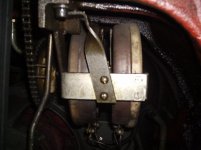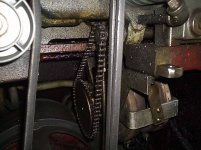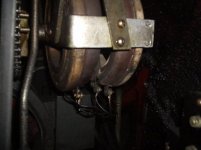gary tisdel
Aluminum
- Joined
- Sep 6, 2007
- Location
- central coast, california
hi guys,
after finding this site and spending quite a bit of time learning on this forum about ee`s, i was fortunate enough to find a 53 ee not too far from me and was able pick it up.
the previous owner has owned a number of ee`s and was able to help me with quite a bit of info and some manuals.
the first issue i need to work out is it will only spin up to 750 rpm. , the speed control appears to be working backwards as the dial says to turn clockwise for higher rpms and you have to turn ccw for higher rpm`s.
i opened the controller box and noticed a little oil in there and there are three round things in the upper right corner that seem to be growing green.
gary
after finding this site and spending quite a bit of time learning on this forum about ee`s, i was fortunate enough to find a 53 ee not too far from me and was able pick it up.
the previous owner has owned a number of ee`s and was able to help me with quite a bit of info and some manuals.
the first issue i need to work out is it will only spin up to 750 rpm. , the speed control appears to be working backwards as the dial says to turn clockwise for higher rpms and you have to turn ccw for higher rpm`s.
i opened the controller box and noticed a little oil in there and there are three round things in the upper right corner that seem to be growing green.
gary










